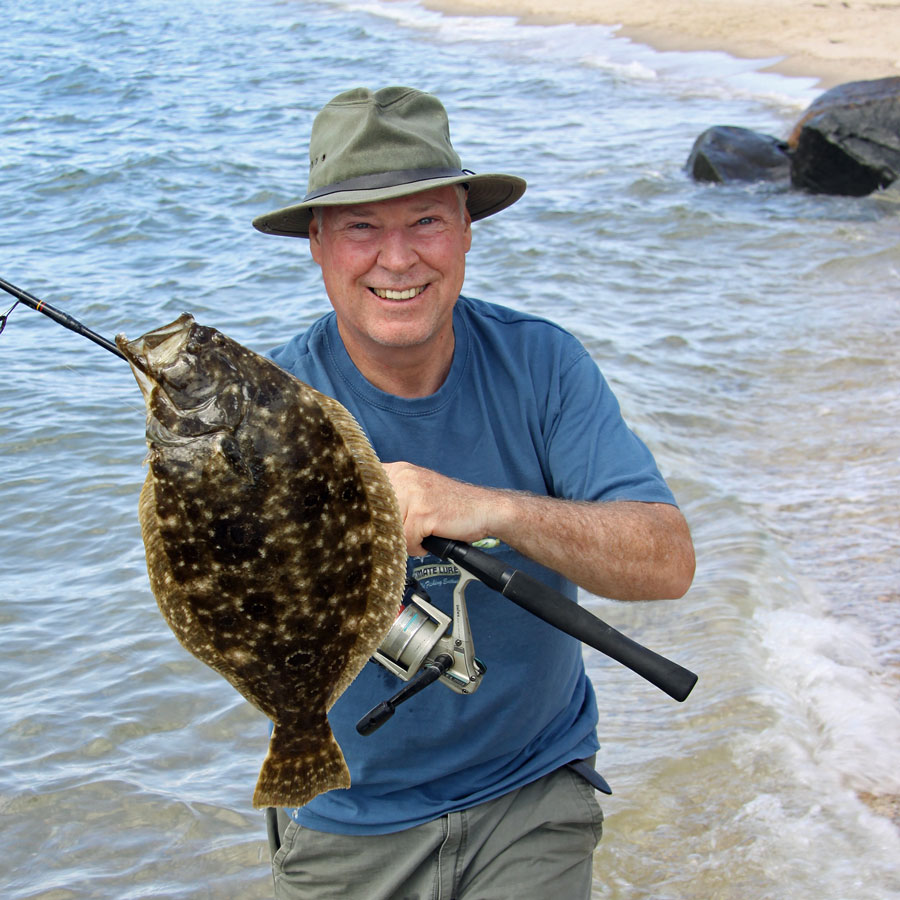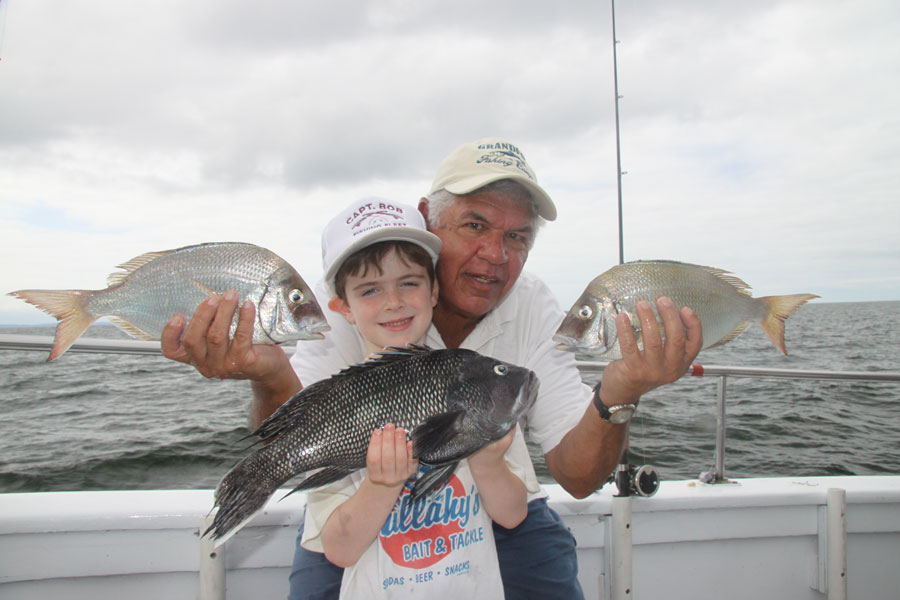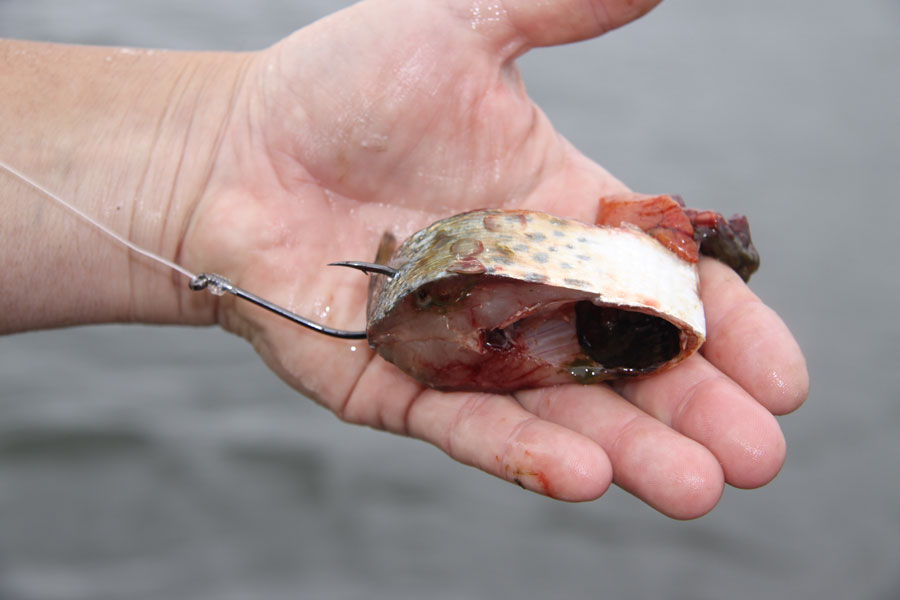By Tom Schlichter

Long Island Sound anglers were in their glory during the month of June with fast action on just about every front. By July, however, fluke have been worked hard, bass are beginning to sulk and the biggest bluefish now roam in small pods instead of large, aggressive schools. That’s not to say the fishing isn’t good as we head into the heat of summer, just that it requires a little more thought, planning, patience and persistence to score consistently.
Take shallow water fishing for stripers in the Sound’s bays and harbors, for example. As the flats grow warmer by the day, many fish simply move out into the cooler depths of the open Sound. Yet you can still tempt those bass that linger inshore by altering your approach. Where May and June found stripers and bruiser blues holding tight to schools of mature bunker, harbor and bay fish now lurk in deeper pockets or cruise just inside of shadow lines during the daylight hours.
Working these daytime shadow lines is one of my favorite early summer bassing techniques. The key to this method is simply learning to recognize where it can be applied, for daytime shadows are far more subtle than their late night counterparts. Instead of a well-defined edge where artificial light shining on the water throughout the night draws baitfish into a concentrated, tightly-defined area, daytime anglers need to seek out locations where a tree line, hill or mansion obscure direct sunlight for a couple of hours each morning or afternoon.
The edges of these daytime shadow lines move as the sun eases across the sky, increasing, decreasing or even obliterating the edge. As the sun rises in the east, you’ll find significant shadows in the southeast and southwest corners of most harbors. At mid-day, with the sun overhead most of these shadow lines completely vanish. They build again along western banks in the late afternoon and early evening as the sun dips toward the horizon. The tip-off is the dark, rich look of the water and a slight but distinguishable drop in water temperature from the surrounding area. Look for places where forgetting to apply sun block on a bright day wouldn’t be an issue.

Note that early in morning, and again later in the evening, the edge of some shadow lines can extend well out from the bank. It’s just ten to thirty yards within the shaded side of the deepest edge, especially where a shadow meets a channel, depression or underwater structure such as boulders, that you’ll want to set some bunker chunks or work slow-moving soft-plastic jerk baits. Timing your foray to coincide with the start of a refreshing flood tide significantly improves the odds of success.
Fluke, too, can be a bit more difficult to figure out in July. Whereas June found the summer flatties in hot pursuit of sand eels, spearing and rain bait (anchovies), the Independence month finds keepers holding in tight pockets along slopes and channel edges as they wait for the bait to come to them. Sure, these fish will slide from 25- to 50-foot depths and back again over the span of a week or two as the larger schools of bait take up holding positions from time to time, but the flat grounds and higher mid-shoal areas where fishing is easy seems to hold a hundred shorts for every keeper. That means you’ll need to shorten your drifts, back off the shoal edges into deeper water, and work with as little scope in your line as possible to probe specific points on the bottom. Braided lines can be a big help in keeping your bucktails straight up and down.
I’ll work a high-low rig sporting a pair of Spro bucktails tipped with spearing when playing with smaller fluke on the flats, but my favorite north shore rig for targeting keepers in tight quarters during July consists of a short, white, 4/0 bucktail teaser set 14 inches above a two-ounce fluke bullet. Tip the teaser with a single spearing or Gulp! Swimming Mullet and the bullet with a long pennant of squid or sea robin. Delay slightly when setting the hook if the strike isn’t signaled by a solid rap.

As for bluefish, if it’s school blues you want, tie on a diamond jig, KastMaster spoon or pencil popper and race for the nearest flock of diving terns. The action with two- to six-pound cocktails can provide all the aerobic exercise you’ll need in a day, plus plenty of smiles for kids and novice anglers of all ages. For bigger fish, however, you’ll want to head out to deeper water and chunk amongst the more serious striper sharpies.
Both keeper bass and big blues can be taken with regularity at Strafford Shoals (also known as the Middle Grounds,) Eatons Neck, and amongst any substantial submerged boulder field you can locate in 40- to 60-foot depths. The basic approach is simple: anchor up-tide of your target and get some bunker chunks down to the bottom. There are, however, slight differences between tempting bass and blues.
For the linesiders, you’ll want to dole out only a trickle of chum; just a chunk or two at a time. For the choppers, chum more heavily and more often, using several pieces at a time and getting plenty of bait – and chum juice – into the water. The idea is to draw the more cautious bass in tight to the boat without filling them up. Put too much chum in the water and they’ll hang back in the slick showing little urgency to move up and sample your baits.
The blues react differently, immediately swarming to the chum source if the scent trail is heavy. Some bass experts hardly chum at all, hoping to stave off a bluefish invasion. Others pile a few chunks into a paper bag, lower it to the bottom on a sturdy fishing rod, and then jig the bag violently until the bottom rips, dispersing the chum below the blues. Don’t forget to retrieve the bag.
By Tom Schlichter









